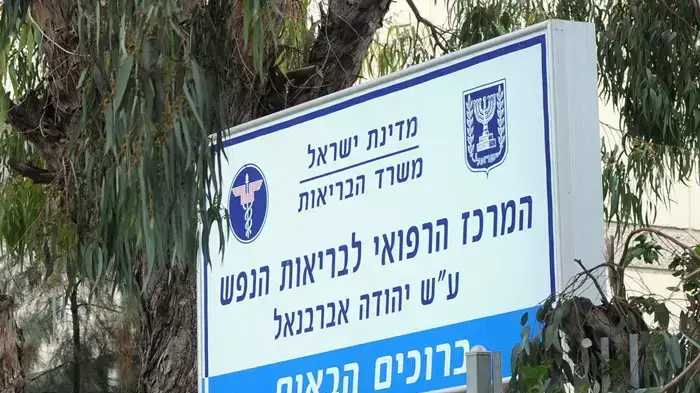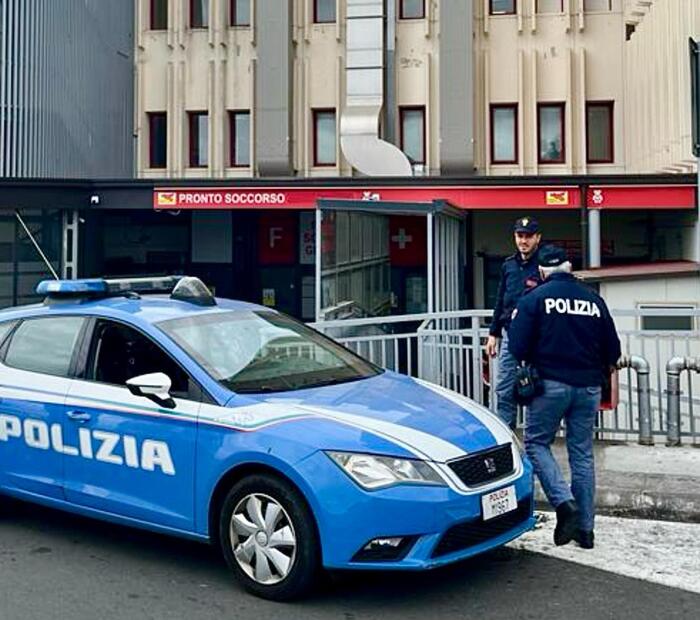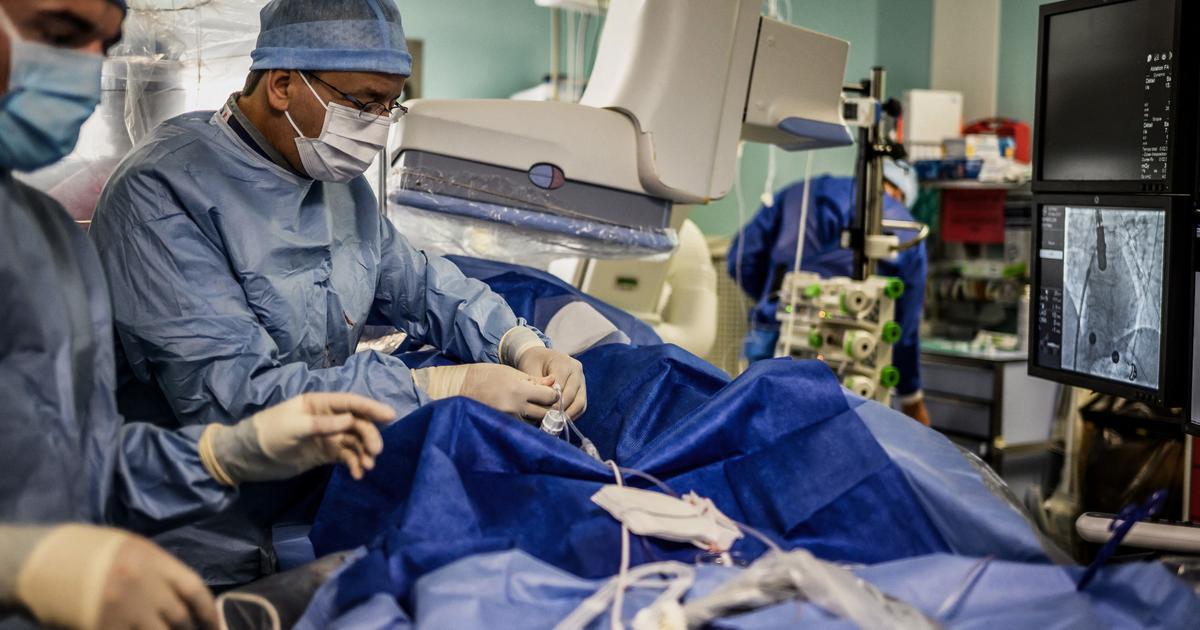New setback for Broadway: shows canceled due to covid 0:54
(KHN) -
The night after Thanksgiving, a small ambulance service covering a large swath of southwestern Colorado received a call informing them that a patient needed to be rushed from Gunnison Hospital to a larger one with an intensive care unit 104 kilometers away in Montrose.
The patient, a 78-year-old man, suffered from atrial fibrillation, an irregular heart rhythm that is not normally life-threatening.
But for patients like this one, with chronic health problems, a history of heart problems, and high blood pressure, the condition can cause a stroke or heart failure.
A COVID-19 'Viral Storm' Is About To Hit US, Expert Says
Workers from the Gunnison Valley Health Paramedics (GVH) paramedic service carried the patient, who was on a stretcher, out of the hospital and into the freezing night air.
AnnieGrace Haddorff, the emergency medical technician on call, helped the patient into the ambulance and got into the driver's seat.
Paramedic Alec Newby climbed into the back and connected the patient to a blood pressure monitor;
a pulse oximeter, which measures heart rate and blood oxygen saturation;
and an electrocardiogram, which records the electrical activity of the heart.
"Obviously his heart is obviously angry," Newby told the man as the EKG confirmed atrial fibrillation.
AnnieGrace Haddorff, left, and Alec Newby transport a patient from Gunnison Valley Health Hospital in Colorado on November 26.
The ambulance pulled onto US Highway 50 for the one hour and 15 minute drive, passing clusters of houses between hills, the sprawling Blue Mesa Reservoir, and the massive Black Gunnison Canyon with its rugged spiers. .
advertising
The patient was stable enough for the long journey, which covered only part of GVH's total service area of more than 7,000 square kilometers.
It is more than twice the size of Delaware and is the largest response area for an ambulance service in all of Colorado.
A typical response area for a fire or emergency medical service ranges from 160 to 640 square kilometers.
In recent years, transports or transfers between facilities, also known as IFTs, like this one, have become increasingly common for GVH paramedics, forcing the team to drive very far from their already vast area. Before the pandemic, the number of transfers increased as Gunnison County's population grew steadily, more tourists were drawn to places like the popular Crested Butte ski resort, and GVH paramedics had expanded their services to larger metropolitan hospitals. outside of Gunnison County.
But now the team has to move patients more frequently and at greater distances, because hospital beds in the relatively close cities of Montrose and Grand Junction are full of COVID-19 patients.
The team has to regularly take patients to Denver, which is about three hours and 40 minutes from Gunnison.
Those responsible for the ambulance service worry that they will not be able to respond to an emergency because their resources, which include six ambulances but only enough staff to operate three of those vehicles, are tied up in a long-distance transfer.
Gunnison Valley Health Paramedics' Colorado response area covers more than 7,000 square kilometers and is the largest for ambulance service in all of Colorado.
What used to be two-and-a-half-hour or three-hour trips to Montrose are now much longer excursions, "and that takes resources away from this community," said CJ Malcolm, chief of emergency services.
"We already did it before covid-19, but now the state is so affected that it is like a daily part of our lives."
Before the pandemic, all ambulances went out simultaneously on calls to 911 or IFTs less than 10 times a year.
Now, according to Malcolm, it happens more often.
In those cases, GVH relies on the emergency response team in Crested Butte, about 45 miles from Gunnison, or the response to the patient is delayed.
In 2018, GVH conducted 166 IFTs, which required almost 64,000 kilometers of travel and a total of 987 hours of ambulance operation, according to data collected by the team.
Last year concluded with 260 IFTs, more than 112,000 kilometers of travel and a total of 1,486 hours of ambulance operation.
This represents a 50% increase in road time.
"Every time we have an ambulance or two in an IFT, this leaves a huge stretch of ground with only one ambulance to respond," Malcolm said.
"This is a moderately scary position to be in, given that we can easily have two or three 911 calls in a row."
The transfer of a patient with atrial fibrillation from Gunnison hospital to a larger intensive care unit in Montrose took one hour and 15 minutes.
In August, for example, Gunnison Valley Health Hospital transferred more than 60 patients, 37 of whom were transported by GVH paramedics. That means that at least once a day that month, a GVH team was taking a patient out of town, Malcolm said. And if the crew members are not scheduled to return to Gunnison at 1 a.m., they must spend the night in a hotel to avoid driving on the treacherous mountain roads while they are too tired.
GVH's service area encompasses nearly all of Gunnison County, a large portion of Saguache County, and sections of Montrose and Hinsdale Counties. It contains mountain ranges, canyons, and wide expanses of high desert. With about 6,600 full-time residents and a university, Gunnison is the largest city served by the team. The surrounding towns - like Tin Cup, Pitkin, and Ohio City - are villages with a couple hundred inhabitants or former mining towns where bonanza artifacts outnumber the residents.
GVH's 21 full-time staff members and 10-20 people working as needed are certified in wildland firefighting and mountain medicine skills, including whitewater, ice and avalanche rescue. To cope with the increasing demands of the IFTs, they have added one more staff member to each shift, and off-duty staff are being called in to help.
As the pandemic drags on, the number of IFTs will likely continue to increase.
In mid-November, the number of people hospitalized with COVID-19 in Colorado was staggeringly high, approaching the December 2020 peak of 1,847.
Hospitalizations remained above 1,500 until the end of the month.
As a result, 93% of the state's acute care hospital beds and 94% of ICU beds were in use as of Nov. 30, according to data from the Colorado Department of Public Health and Environment.
Whenever someone has to be transferred to another facility, Gunnison Valley Health Paramedics is left with few vehicles to respond to emergencies in a coverage area more than twice the size of Delaware.
"I don't think the concern about capacity will subside anytime soon," said Cara Welch, communications director for the Colorado Hospital Association.
Adding to the tension are people seeking care that were delayed due to the pandemic and other respiratory viruses, such as respiratory syncytial virus, circulating in the state, Welch said.
Kelly Thompson, chief operating officer for CareFlight of the Rockies, an air ambulance service that operates in Colorado and other parts of the West, agreed with this assessment.
"We have already been transporting a large number of children with RSV who are sick, and on top of that you have Covid-19," Thompson said.
"It is a great concern. This is the time when we have a lot of sick people."
In early November, to manage growing concerns about the capacity of Colorado's hospitals, hospitals and health systems, they activated Level 3 of the state's patient transfer system, the highest. That means that patients with covid-19 and without covid-19 can be transferred without their consent from a hospital that does not have enough capacity to another with more space. Hospitals can also send the sickest patients to medical centers with more specialized care.
When GVH crew members approached Montrose with their patient over the recent holiday weekend, Newby called the hospital to inform staff that they were arriving.
They reached the entrance to the emergency room and Newby and Haddorff led the patient to a hospital room.
Montrose hospital staff were responsible for moving the patient from the gurney to a hospital bed while Newby updated them on the patient's medical records.
They were soon back in the ambulance and headed home.
"IFTs can be stressful," Haddorff said as he maneuvered down the winding mountain road bathed in moonlight.







/cloudfront-eu-central-1.images.arcpublishing.com/prisa/O7I32YYPXNE3NOYW62L2VSC574.jpg)

